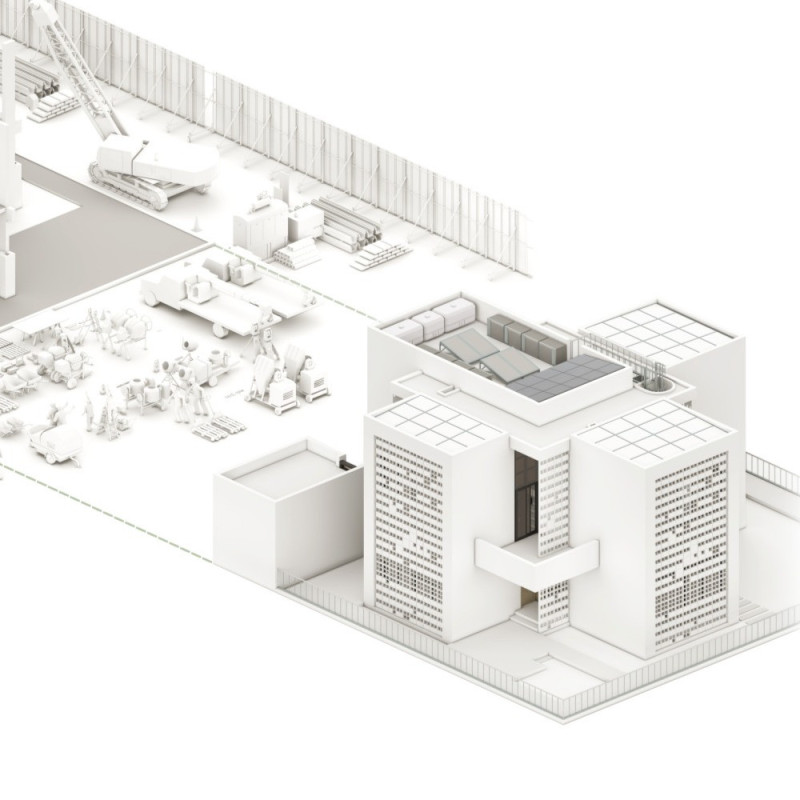5 key facts about this project
At its core, the project functions as a [describe the primary function, such as community center, office building, residential complex, etc.], catering to a diverse set of activities that encourage interaction and engagement. The design framework places a strong emphasis on creating spaces that foster community and connectivity, making it not just a structure but a vital part of the social landscape.
The architectural design incorporates several important elements that are both practical and symbolic. The use of [mention any notable structural elements, such as large windows, open floor plans, etc.] promotes natural light and airflow, which enhances the user experience and reduces energy consumption. The incorporation of green roofs and landscaped terraces not only contributes to the aesthetic appeal but also serves as a nod to sustainability, promoting biodiversity and reducing heat islands in the urban environment.
Unique design approaches are evident throughout the project, such as the intentional use of materiality that aligns with regional characteristics. The selection of materials like concrete, glass, wood, and steel reflects a commitment to durability while also providing warmth and visual interest. For instance, the extensive use of glass allows for transparency and visual connectivity between indoor and outdoor spaces, facilitating a sense of openness and inviting the surrounding landscape into the heart of the design. Meanwhile, the use of wooden elements creates a tactile experience that softens the structural rigidity typically associated with architecture.
The spatial organization within the project has been meticulously planned. Key areas such as [list any significant spaces like communal zones, private offices, or recreational facilities] are designed to encourage collaboration and flexibility. The flow of movement throughout the space is intuitive, enabling users to transition seamlessly between different functionalities, whether it be formal gatherings or casual interactions. Each zone is thoughtfully articulated to reflect its purpose while maintaining a cohesive overall design.
Additionally, the project takes into account environmental considerations, implementing strategies that aim to reduce its carbon footprint. Features such as [mention specific sustainable practices like solar panels, rainwater collection systems, or energy-efficient systems] are integrated into the design, showcasing a forward-thinking approach to building practices. These elements not only fulfill practical needs but also serve to educate users on the importance of sustainability.
What makes this project particularly noteworthy is its dedication to enhancing the user experience while remaining sensitive to the broader community context. The design offers more than just a space; it creates opportunities for social interaction and personal well-being. The architectural vision presents a clear understanding of how users interact with their environment, resulting in a structure that feels both inviting and functional.
For those interested in delving deeper into the specifics of this architectural endeavor, exploring the architectural plans, architectural sections, and detailed architectural designs will provide valuable insights. The unique architectural ideas presented throughout the project serve as an excellent reference for those looking to understand the delicate interplay between design, functionality, and environmental responsibility. Engaging with the full presentation of the project will enhance appreciation for the thoughtfulness embedded in its design, demonstrating how architecture can effectively respond to both human and environmental needs.


 Diala Salamah Alyhya,
Diala Salamah Alyhya,  Ramez Badi Jamal,
Ramez Badi Jamal, 























